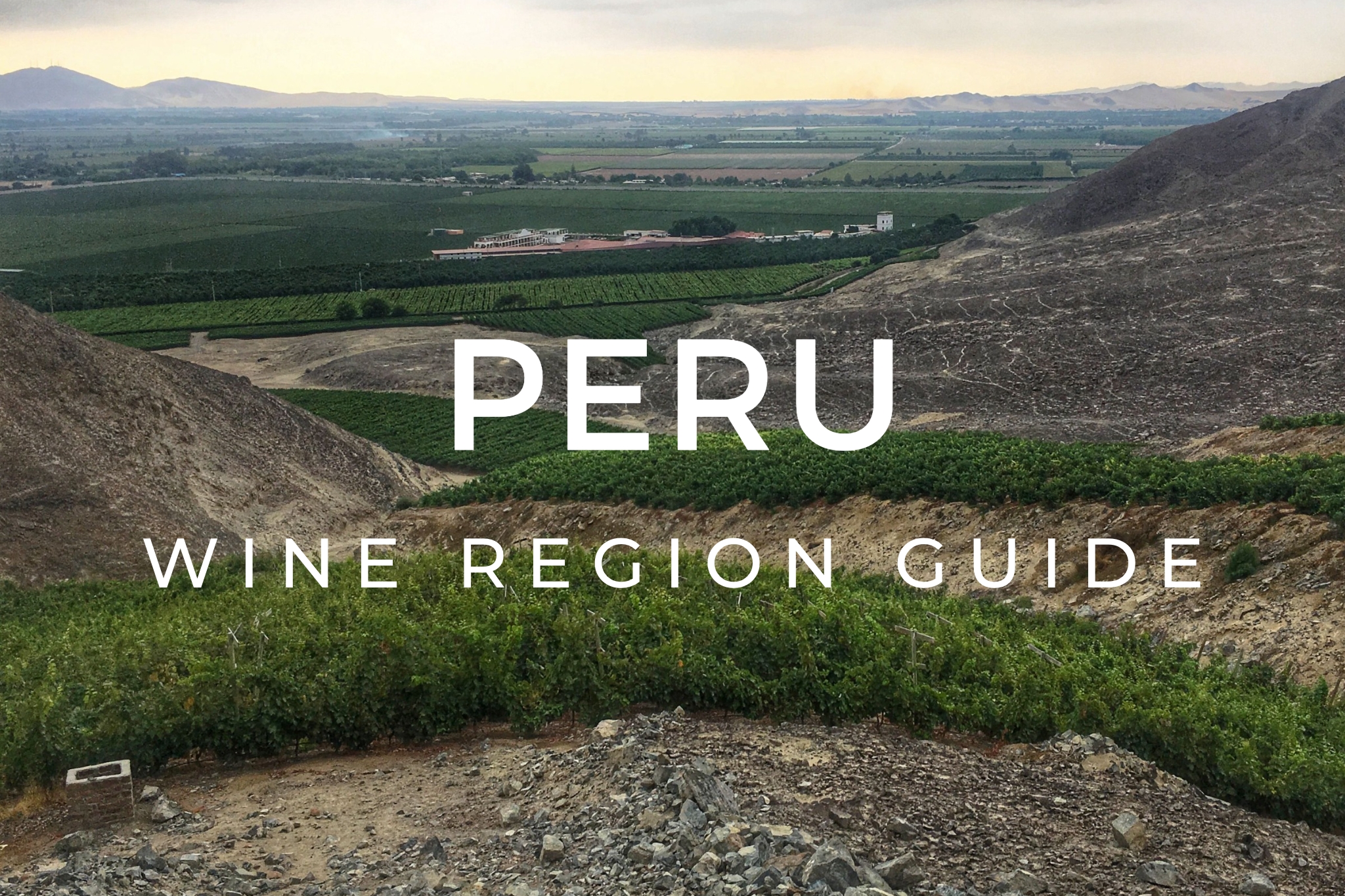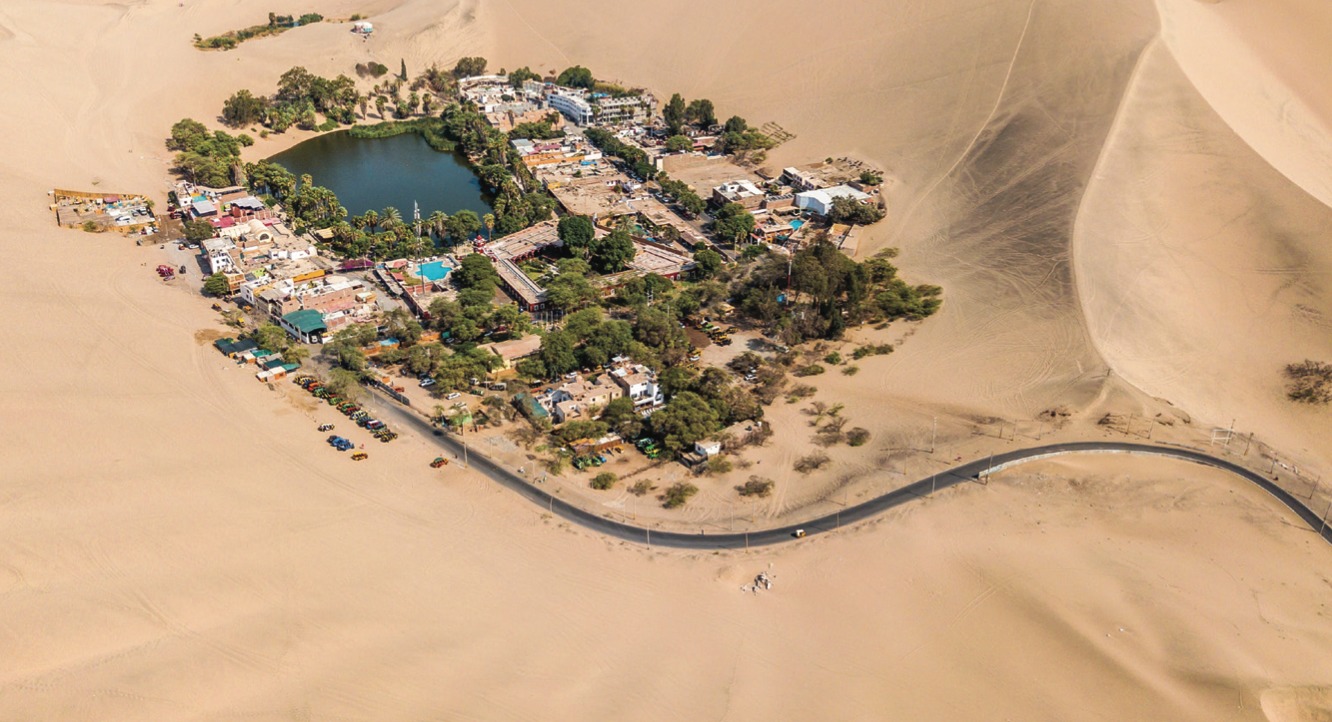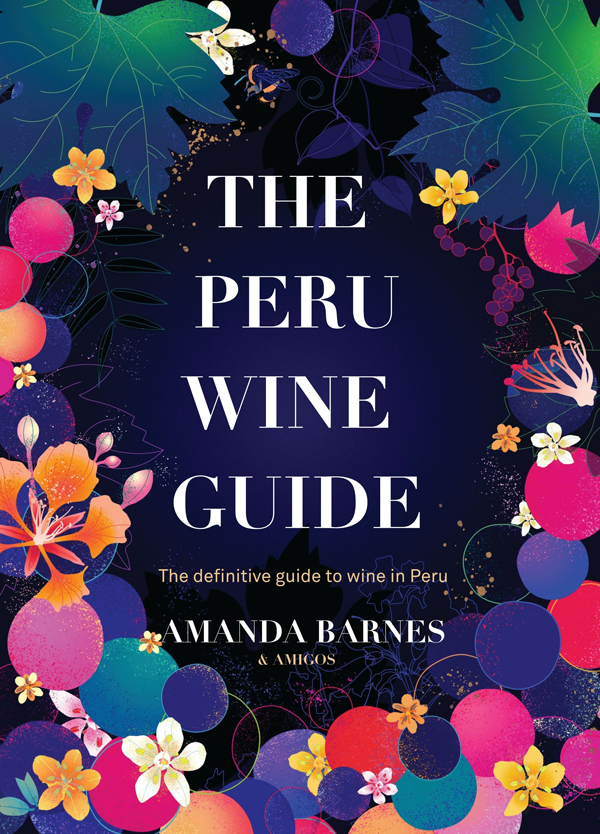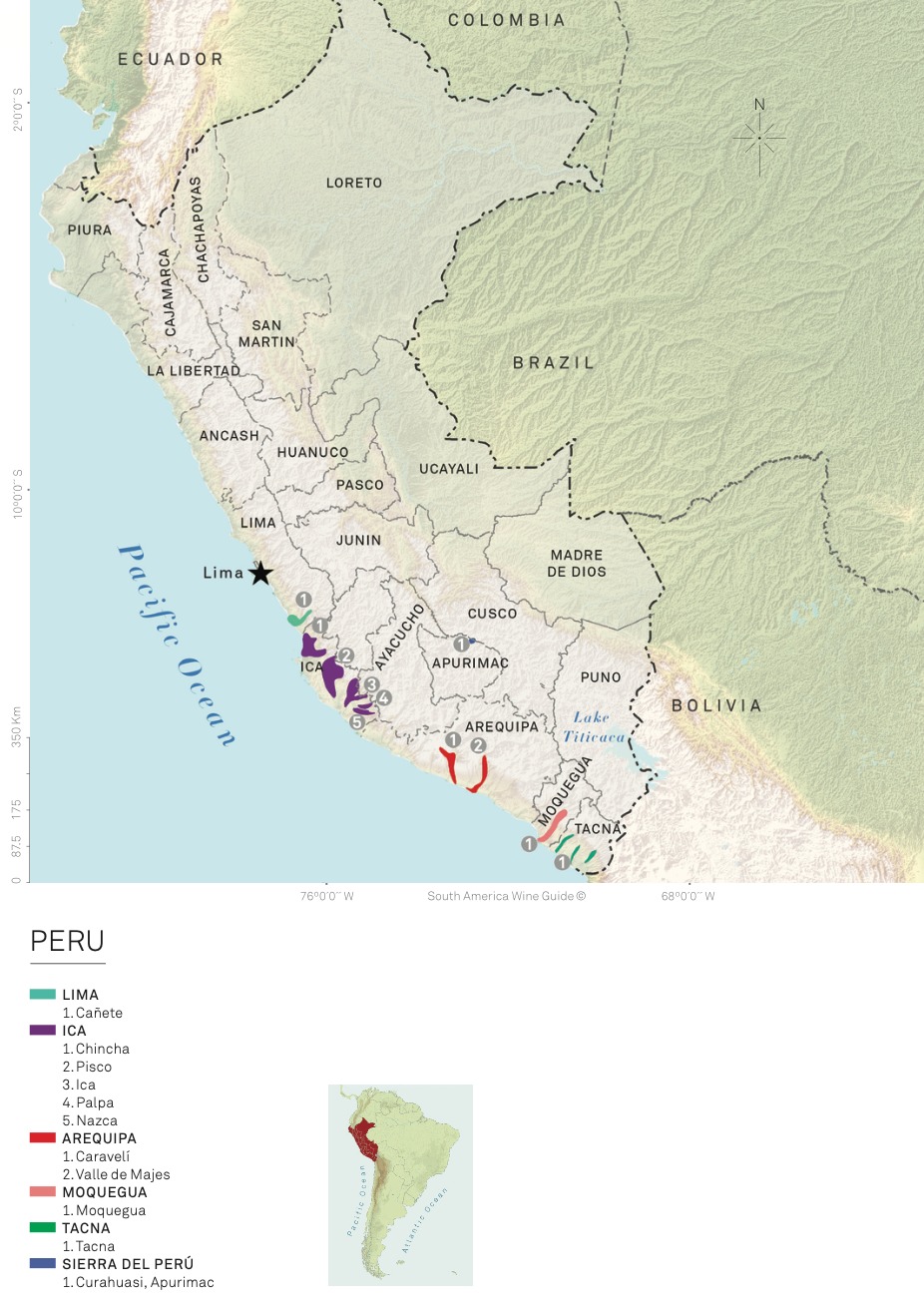The wine regions of Peru are some of the most extreme and memorable in South America. Check out our ultimate Peru wine guide and get to know everything about the terroir of this historic wine nation and the modern wines of Peru.
Guide to wine regions & wines of Peru
Facts on Peruvian wine
Lima wine region
Ica wine region
Arequipa wine region
Moquegua wine region
Tacna & Sierras del Peru wine region
Map of Peru
Ultimate guide to wine regions & wines of Peru
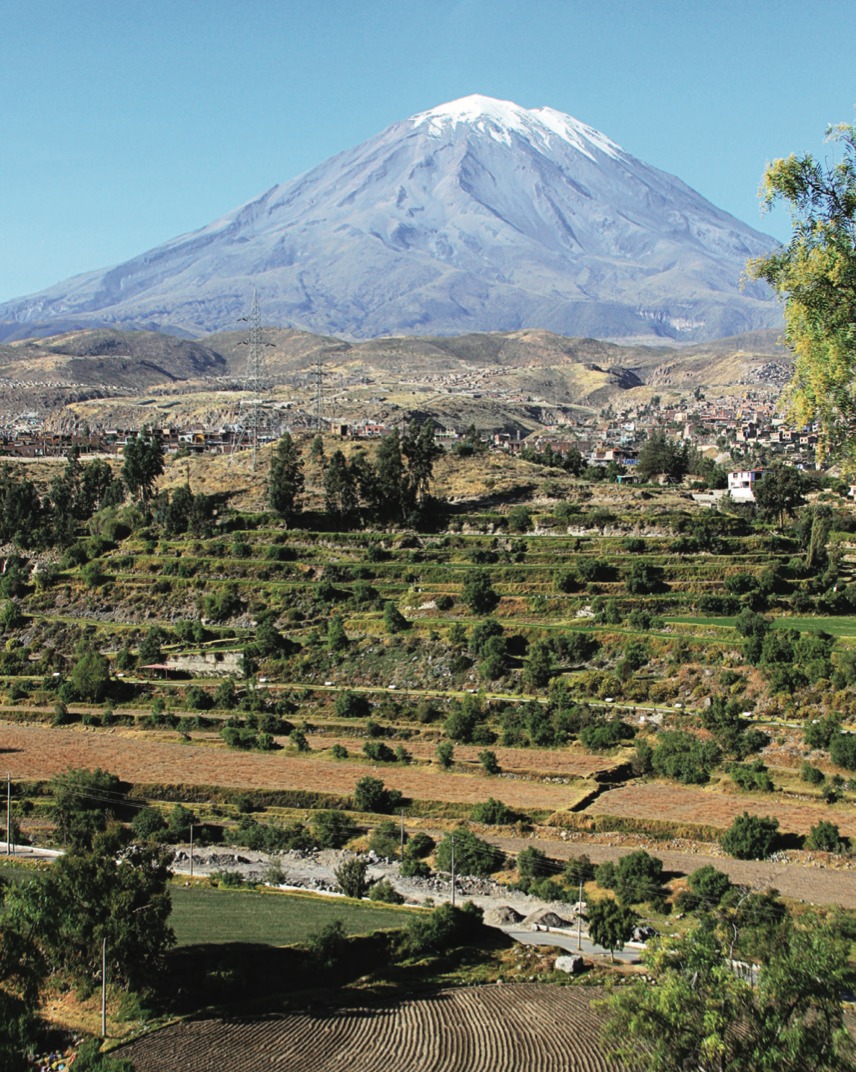
Most of Peru’s vineyards hug the coast running south from Lima, where the lower-altitude, coastal regions of Lima, Ica, Arequipa, Moquegua and Tacna provide have provided the ideal climate for Pisco production over the past four centuries.
Traditional Pisco and Criolla varieties dominate, with Quebranta, Mollar, Albilla, Negra Criolla and Moscatel as the top varieties planted throughout Peru’s wine regions. These varieties are largely made into Pisco, but there is also an exciting and growing tendency towards making artisanal, dry wines from Criolla varieties.
In Ica, Peru’s most important and concentrated wine region, you’ll also find Peru’s most diverse range of international grape varieties.
Fast Facts on Peruvian wine
- Hectares planted: 29,000*
- Producers: 10,000* growers
- Usage of grapes: table grapes 65%; Pisco 27%; wine <7%
- Wine regions: Ica (7,600 ha); Lima (2,950 ha); Arequipa (1,300 ha); Moquegua (870 ha); Tacna (810 ha); Sierra del Perú (<100 ha)
- Most-planted varieties: Quebranta, Italia, Albilla, Negra Criolla, Mollar, Moscatel, Torontel, Uvina, Isabella
*Statistics include table grapes and grapes for Pisco production.
The wine regions of Peru
Lima
Although there are vines planted throughout the region of Lima, over 80% of Lima’s grape production is concentrated in Cañete — and in particular around Lunahuaná — which is the southernmost sub-region by the coast, just above Ica. The vast majority of wine grapes in Lima end up being used for Pisco production, although there is a small amount of wine production too. It is more typically Borgoña wine though, from the hybrid varieties of Isabella and Niagara respectively, although there is growing interest in making fine wines.
Ica
Even though Ica is the heartland of Peruvian wine production, it is one of those off-the-beaten-track wine destinations. Tacama claims to be the oldest active vineyard in the New World, set up in the 1540s by Francisco de Carabantes. It is also one of Peru’s most visited wineries, along with nearby Intipalka. There are also a host of smaller wineries in Ica too, and a growing scene of natural wine producers here including Bodega Murga and Mimo.
Read more about Ica in our ultimate guide to wine in Ica
Arequipa
Arequipa is one of the most important cities in Peru and the surrounding region has been an agricultural hub for centuries. The main wine regions of Arequipa today are the Valle de Majes and Caravelí.
Both are filled with old vines and small, artisanal wine producers who mainly make Pisco and boutique wines from old Criolla varieties. While Majes is a river valley, Caravelí is at higher altitude, at 1,800 m.a.s.l., and has some very old vines over 200 years old. Caravelí wines are also often made in traditional tinajas.
Moquegua
Although Moquegua is one of Peru’s smallest departments in terms of size, the scores of ancient clay tinajas that you’ll find scattered around all hint at its long history as a wine region. Grapes have traditionally been grown right across the region, from the higher lands of Omate down to the coastal zone of Ilo, with scattered villages in between.
Wine production today revolves around small, artisanal producers who often make not only wine from their old Criolla vines (especially Negra Criolla) but also Pisco, juice and mistela. Fruit liqueurs are also a local speciality and the sunny, warm and dry desert climate is ideal for deliciously ripe fruit production too.
Want to know more detail about
the wines & wine regions in Peru?
Get your copy of the PERU WINE GUIDE E-BOOK
& the full, award-winning hardback THE SOUTH AMERICA WINE GUIDE
Tacna
Bordering Chile, the region of Tacna has a strong history and story with Pisco production. However there is also a growing scene of garage and boutique wine producers here with a thriving wine route. Negra Criolla is the most important variety in Tacna, followed by Italia and Quebranta. Tacna is also a major olive- producing region for Peru.
Sierra del Peru
Peru’s geography is split between the coast, mountains and jungle. While the humid environment of the jungle isn’t suitable for viticulture, the Sierra del Perú mountains have historically been used for wine production although most were abandoned centuries ago.
Although viticulture in the Sierra del Perú has its place in history, it is only recently that the story has been restarted. In Apurimac, former banker-turned-sommelier Fernando Gonzales-Lattini and his wife Meg began their Apu winery in 2011 and have planted an ambitious 7-hectare vineyard spanning two steeply sloped sites with limestone soils at the impressive altitudes of 2,850 and 3,300 m.a.s.l.. Their Sauvignon Blanc is particularly worth hunting down, and they have promising Sangiovese too.
Want to learn more about the wines of Peru?
Vintage 2022 and discovering the unique charisma and history of Peruvian wine Guide to visiting Peru and experiencing Peruvian wine Guide to Criolla and Pisco varieties in Peru The ultimate guide to wine in Ica A guide to Peruvian food The ultimate recipe for Peruvian causa rellena
